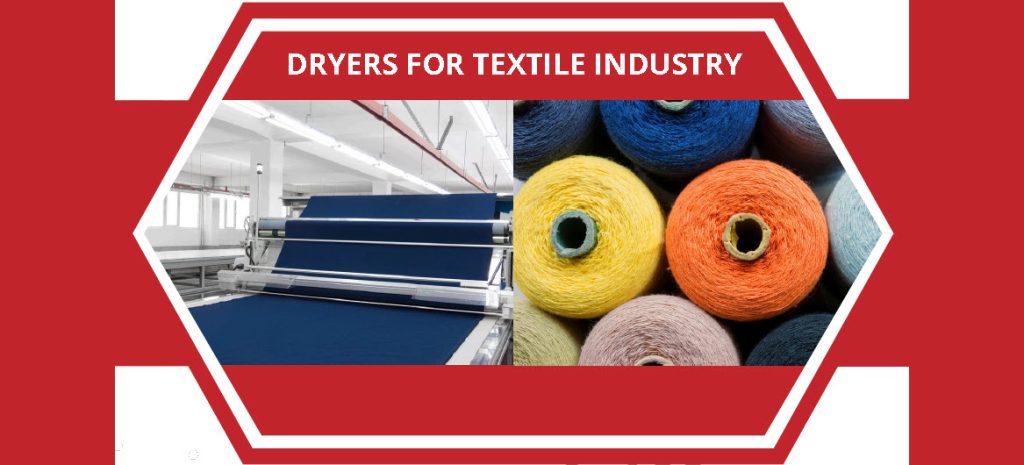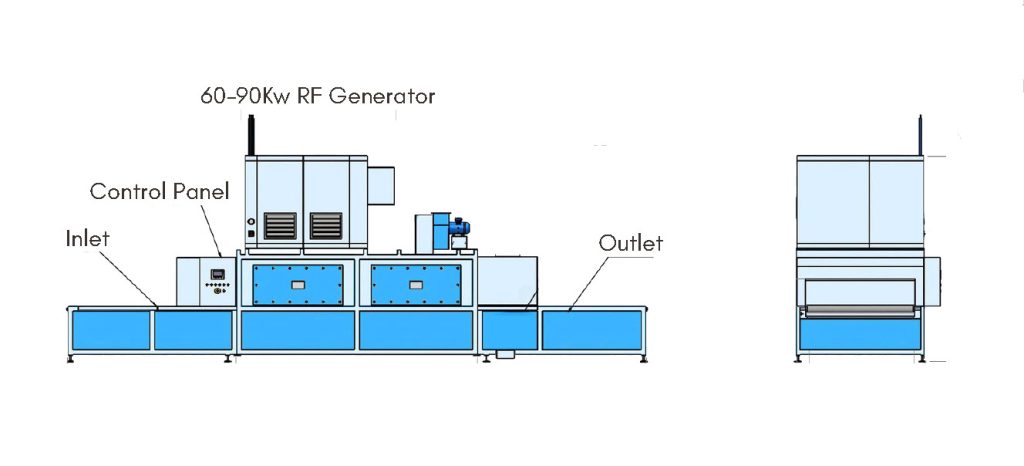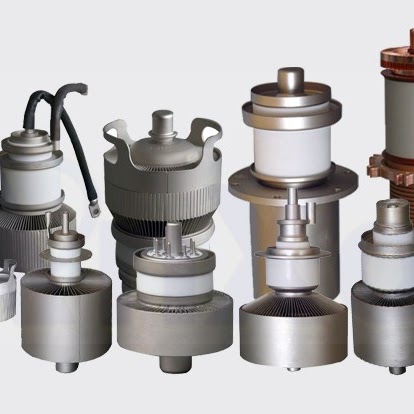
For Reason to Choose the Radio Frequency Dryers
>>> Energy Efficiency
>>> Uniform Drying
>>> Increased Productivity
>>> Gentle on Fibers
>>> Environmentally Friendly
Drying of Textile Fabrics
Common Materials: Cotton – Wool – Acrylic – Viscose – Linen – Silk – Nylon – Non woven
Common Products: Yarn – Bump – Bobbin – Loose Fiber – Hosiery – Carpet -Moquette

A wide range of natural, artificial, and synthetic fibers can be effectively dried using various methods. These fibers can be in different forms such as loose stock, combed and spun, or as filament fibers. They can be either pure or blended, and their drying process can achieve the desired residual moisture level with exceptional efficiency and quality outcomes. This level of excellence cannot be matched by any traditional hot air drying system.
When it comes to drying loose stock after carbonizing, bleaching, or dyeing, as well as batch or continuous centrifugal hydro extraction, the employment of radio frequency (RF) drying offers numerous advantages. These advantages include minimizing product losses, ensuring uniform drying, enhancing the physical and mechanical characteristics of the fibers, and ultimately improving subsequent carding, combing, and spinning operations. As a result, a higher yield of yarn metric, potentially up to 2%, is achieved.
Both tow slivers (in the form of pressed cakes after dyeing and hydro extraction) and tops slivers (dyed and hydro extracted as bobbins, bumps, or ‘big forms’ after back-washing and roller squeezing) can be efficiently dried while folded on the conveyor belt of the “RF” series dryers. This method ensures a consistent distribution of residual moisture within the sliver, eliminating lamination effects commonly encountered in drum dryers.
Hanks, which are dyed and subjected to centrifugal hydro extraction or in-line squeezing, can be dried flawlessly without the need for movement or exposure to strong airflows, thus preventing yarn entanglement issues often associated with hot air dryers. This approach significantly improves the efficiency of the winding operation.
Prior to being placed on the “RF” dryer conveyor belt, tops in bump and bobbin form can be dyed and subjected to centrifugal hydro extraction using movable stainless steel basket-type carriers or directly on centrifugable spindles. Yarn packages, after dyeing, can undergo centrifugal hydro extraction or simple pre-drying in a pressure (rapid) dryer. An automated handling system can be implemented to streamline the entire sequence of operations involving dyeing, hydro extraction, and drying.
Work frequency: 27,12 MHz
Typical evaporation rates: 1.2 (H2O) kg/kWh (RF)
Typical humidity rates IN/OUT: 30% – 2%

RF DRYER - JULIET 90
RF Output power
60 Kw
90 Kw
120 Kw
180Kw
Model Type
Air Cooled / Single Module
Water Cooled / Single Module
Air Cooled / Double Module
Water Cooled / Double Module
Evaporation Rate Kg(H2O)/h
78 Kg/h
112 Kg/h
150 Kg/h
225 Kg/h
Spare Parts List for Stalam


TRIODE POWER TUBE
> STT5085A
> STT90105W
> STT5085W
> STP2040A
> STT2040W
> STT150180W

POWER RESISTOR
> 70 OHM 500W RFC
> 110 OHM 500W RFC
> 5 OHM 370W PMOR
> 5 OHM 155W PMO
> 50 OHM 500W RFC

CERAMIC POWER
CAPACITORS
> PD140 – PE140 2000PF 13 KV 45A
> PEF220 100A 20KV2500PF
> TYPE 847-33PF +-20% 5KV
> TYPE 804 10KV 2500PF
> DF30X90 7KV 1200PF
> TYPE 848 42PF +-10% 5KV
> TYPE 102 CLF 822pf 1K
Spare Parts List for Fong's & RF System



TRIODE POWER TUBE
> TRIODE RS3005CL
> TRIODE ITL12-1
> TRIODE RS3060CL
> TRIODE RS3060CJ
> TRIODE RS3040CL
> TRIODE RS3040CJ

POWER RESISTOR
> OVERLOAD RESISTOR 1 OHM
> OVERLOAD RESISTOR 2 OHM
> START RESISTOR 22 OHM
> GRID RESISTOR 50 OHM
> GRID RESISTOR 65 OHM
> GRID RESISTOR 210 OHM

CERAMIC POWER
CAPACITORS
> BLOCKING ANODE CAP. PD70
> BLOCKING ANODE CAP. PE100
> GRID CAP. PD140
> FILTERING CAP. DB30X88
> FEED THROUGH CAP. DB45X155

